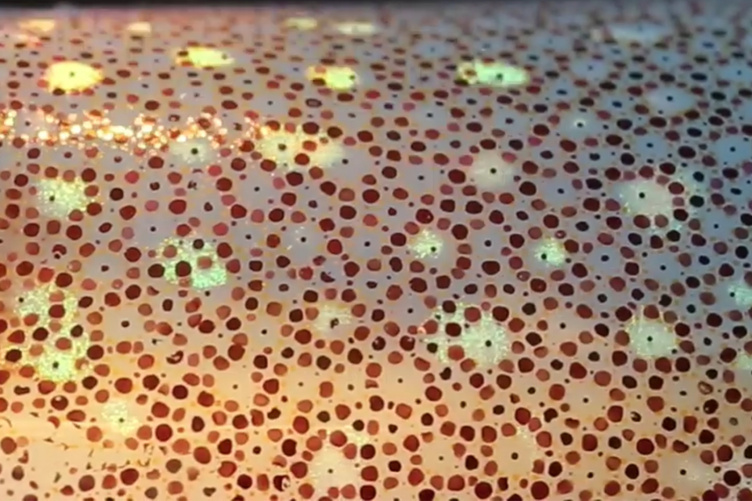
Skin of the longfin squid. Credit: Steve Senft, Marine Biological Laboratories at Woods Hole
We’re one step closer to clothing and cosmetics that can change color and pattern in response to their surroundings, thanks in part to new research from Feixia Chu and Matthew MacManes, both faculty in COLSA’s department of molecular, cellular and biomedical sciences.
Chu and MacManes played an important role in the recently published work, led by Leila Deravi, an assistant professor of chemistry and chemical biology at Northeastern, and Roger Hanlon, a senior scientist at the Marine Biological Laboratory, which focused on the longfin squid, Doryteuthis pealeii and revealed an entirely new aspect of the squid’s color-changing abilities. Because of the contributions from Chu and MacManes, it’s also the first study to identify the specific proteins in the squid’s chromatophore cells responsible for determining cell color — in the case of squid, a range of shades in red, brown and yellow.
“We identified more than 400 proteins from those chromatophore cells then we compared the quantity of the protein in the three different color cells and identified the major differences,” says Chu, who is an expert in proteomics, the study of the entire set of proteins in an organism or system.
MacManes, whose focus is bioinformatics, helped the research team generate a protein database from all the messenger RNA molecules expressed by the genes of the cephalopod skin.
“Because Doryteuthis pealeii have genomes that look fundamentally different from more well studied genomes like the humans and lab mice,” he says, “this is an important step towards comprehensive characterization of chromatophore cells.”
An understanding of squid genes was crucial, MacManes adds, to making any sense of what the rest of the team was finding — a sentiment echoed by Deravi.
“We relied on the expertise of people like Matt and Feixia to help us piece together the puzzle,” she says.
But there’s still more to discover.
“This is a significant and necessary step forward in understanding cell color determination, but from a biological point of view there are still a lot of unanswered questions,” notes Chu. “For instance, how different chromatophore cells are organized for pattern display and what is the contribution of metabolic network in chromatophore cell development and color evolution.”
-
Written By:
Sarah Schaier | College of Life Sciences and Agriculture
















































